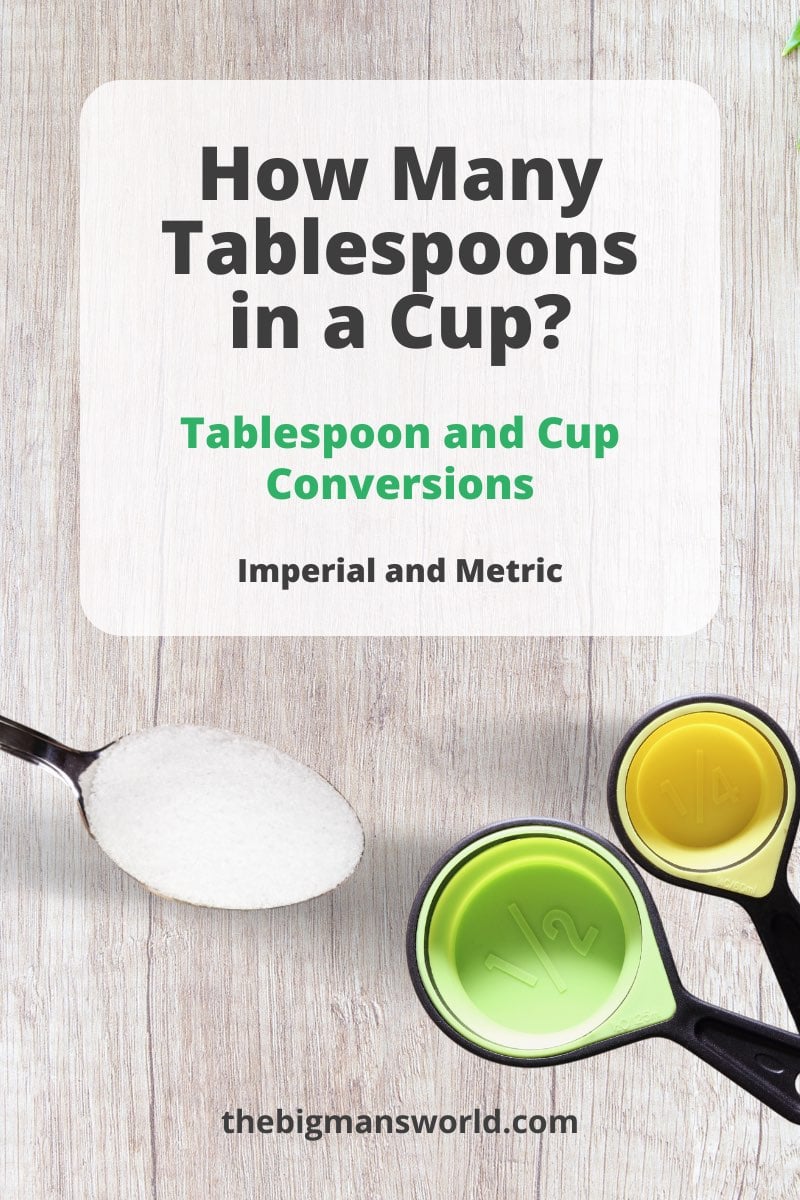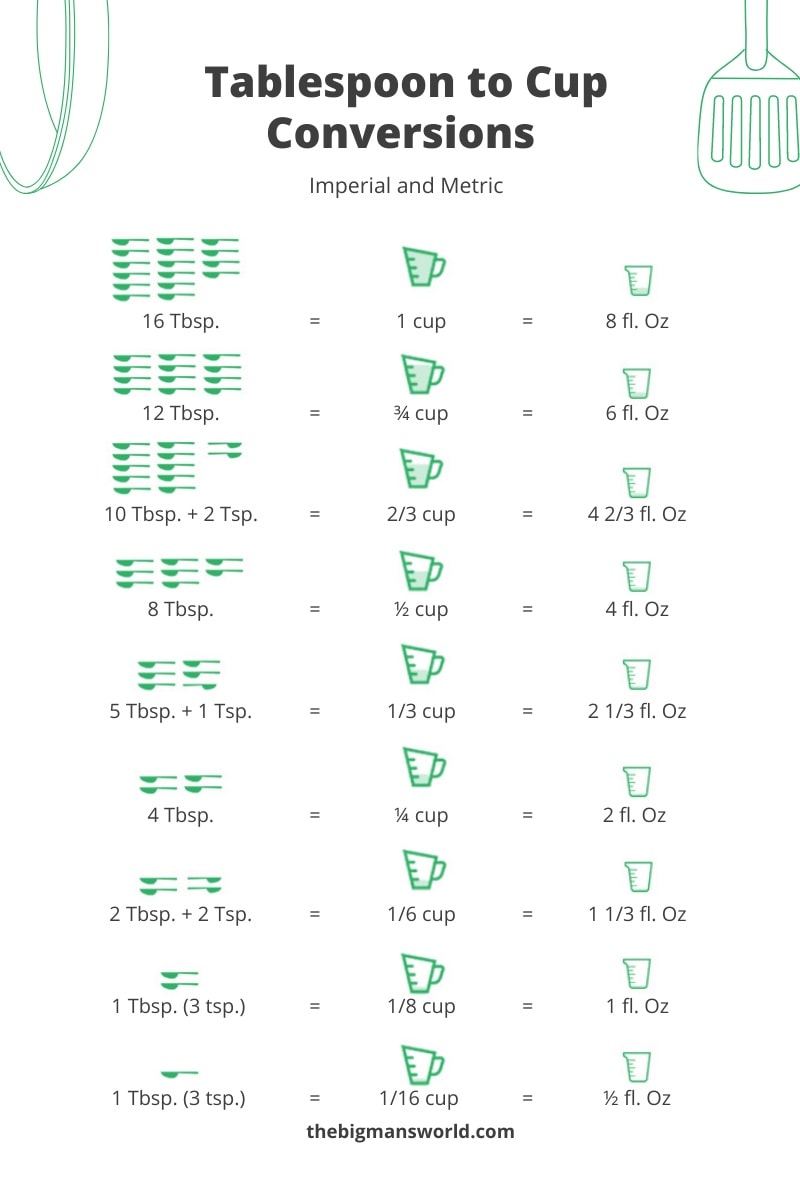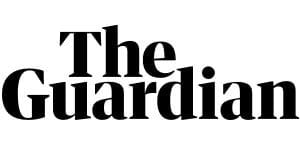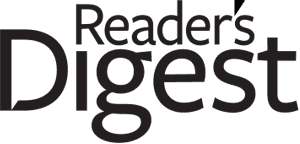This post may contain affiliate links. See my disclosure policy.
Need to know how many tablespoons are in a cup? Use my guide and conversion charts to seamlessly convert the two whenever you need to!

I misplace my measuring cups more than I care to admit, which is why knowing the conversions comes in very handy. It’s also helpful for halving or doubling recipes on the fly.
So, to maintain consistency and avoid some headaches, I decided to answer once and for all exactly how many tablespoons are in a cup.
Table of Contents
How many tablespoons are in a cup?
There are 16 tablespoons in one cup.
Personally, I find it’s easier to remember ¼ cup = 4 tablespoons. Either way, use the following calculation to easily convert cups to tablespoons.
Number of cups × 4 = number of tablespoons
To convert tablespoons to cups
Number of tablespoons ÷ 4 = number of cups
Cups to tablespoons conversions
Use the table below for a list of ratios that will allow you to convert tablespoons to cups and vice versa:
| Tablespoons (tbsp) | Cups |
| 16 tablespoons | 1 cup |
| 12 tablespoons | 3/4 cup |
| 8 tablespoons | 1/2 cup |
| 5 1/3 tablespoons | 1/3 cup |
| 4 tablespoons | 1/4 cup |
The US customary system
These conversions are based on the US customary system (USCS) of measurement, which is primarily used in the United States. While similar to the British Imperial system, they’re not entirely identical.
It’s safe to say MOST online recipes use US customary measurements, so understanding the conversions will help you follow the recipe correctly.
1 US Cup = 236.59 milliliters (ml)
1 US Cup = 16 US tablespoons (tbsp)
Metric vs Imperial cups
It’s always important to know where your recipe originated to make sure it’s followed accurately. For example, if you want to make a healthy chocolate cake using the customary system and then try it with the metric system, the results won’t be the same.
A metric tablespoon is considered slightly larger than an Imperial tablespoon, as is a metric cup slightly larger than a US customary cup.
1 US Cup = 16 US tablespoons = 236.59 milliliters (ml)
1 metric Cup = 15 metric tablespoons = 250 milliliters (ml) (international)
Can I use cups to measure dry and liquid ingredients?
Yes! Both wet and dry ingredients are the same when measured in cups, tablespoons, and teaspoons. That’s because they’re all units of volume measurement.
So, whether you’re measuring a cup of flour, spices, or brown sugar, it makes no difference whether you use liquid measuring cups or dry measuring cups.
What is a cup?
A cup is one of the easiest and most practical units of measurement established for cooking and baking, although the exact size of “cups” can vary slightly from country to country.
In the US, 1 cup represents half a US pint, 8 fluid ounces, or 240 milliliters (ml). It may also be referred to as the US legal cup when used for nutrition labels by the FDA. Internationally, most countries have adopted the metric system of measurement, where a cup is slightly larger, at 250 milliliters (ml).

Frequently asked questions
There are 16 tablespoons in a cup of butter.
There are 4 tablespoons in 1/4 of a cup.
There are 8 tablespoons in ½ cup.
No, 8 tablespoons is equivalent to ½ cup. For one cup, you need 16 tablespoons.
There are 48 teaspoons in a US customary cup.
A dessert spoon is a small measuring spoon (used for desserts) that’s often referred to in recipes from the UK, Canada, Australia, and New Zealand. It measures approximately 2 teaspoons.














Thank you so much, very helpful information
Thanks for the measurements tables coutaint
Love this Arman!! Can you do one for ingredient substitutions?
E.g. Tapioca Powder and Arrowroot Powder etc
Thank you!!!!
Very helpful charts explaining weight in cups to ounces